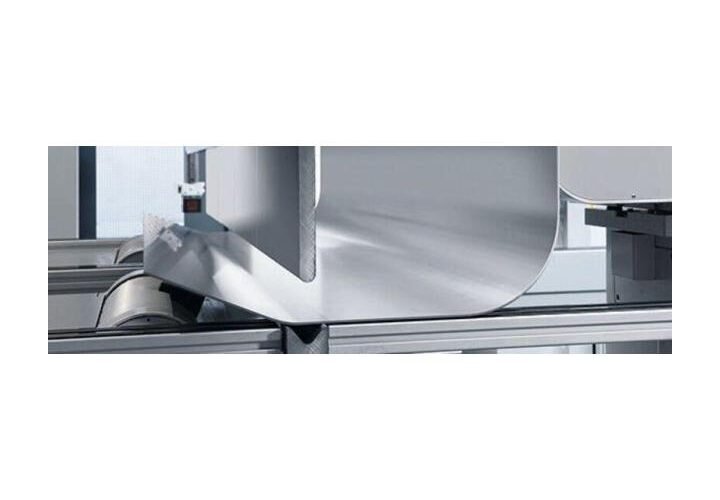Folding of sheet metal is part of the manufacturing technologies of bending and forming. It involves the folding of a surface part of sheet metal.
A short definition of the term folding is already given in the title. It remains to be added that during folding, the bending process is carried out simultaneously along the entire length of the bending line and that it is a manufacturing process for the machining of sheet metal, i.e. thin, semi-finished metal products. Folding is used to produce profiles, more precisely, folded profiles.
Roll forming is part of the same area of application. Since the forming process takes place successively along the bending line, however, roll forming does not belong to the folding category. With regard to the material properties, a further prerequisite for folding is sufficient plastic deformability. A complete definition of folding is therefore: “Plastic change of the shape of sheet metal parts by cold forming along straight lines, simultaneously over the entire length”.
Sheet metal folding
Sheet metal folding is a vital phase within sheet metal manufacture and the 2nd step in the four-step process, complying with cutting. Sheet metal folding includes flexing the metal to the desired form needed for your manufacturing product. The term “folding” can be used mutually with “bending” to explain this activity within the sheet metal manufacturing sector. Folding your sheet metal is to produce the best bespoke item you require. By folding your sheet metal, you form it into the shape that develops your final product. With sheet metal folding, your item would take the appropriate form.
How is forming classified in the standard scheme of manufacturing processes?
The DIN body of standards divides manufacturing processes into six main groups under DIN 8580. It assigns folding to group 2, under forming, which is standardized according to DIN 8582. The further subdivision assigns forming to subgroup 2.4, bending forming. It contains a subset of the manufacturing processes contained therein. DIN 8586, which covers this subgroup, basically distinguishes two categories of forming by bending: bending forming with straight-line and rotating tool movement. The latter is typical for folding. The first category includes the process groups of free bending and press-brake bending. The following bending processes meet the criteria of folding:
- Free bending with one-sided clamping
- Free bending with press brake (three-point bending)
- Free round bending (successive production of curves by repeated free bending)
- V-die bending
- U-die bending
- Forming
How does folding work?
Since the term describes a group of forming processes, there are different modes of operation. Common to all processes is that the workpiece is bent around one or more straight edges of a tool by applying pressure. The machine tools used for this purpose are press brakes, folding benches or folding machines.
Functionality of folding with one-sided clamping and folding
In free bending without a die, the workpiece is clamped along the edge to be produced and a punch moves past the clamp at right angles to the sheet surface. During folding, the plate is bent around the folding wing opposite the punch. Folding works very similarly. The difference is that instead of a punch moving in a straight line, a folding wing rotates around the bending edge. The tool thus performs a movement that results in a corresponding bending leg of the sheet metal profile.
Fundamentals
How does stamping and punching of sheet metal work?
What happens during press-brake bending?
In bending processes using a die, the bending edges are generally located on the punch of the machine tool. When more complex parts are folded, for example Sigma-shaped profiles in a single operation, additional bending edges may also be required on the die. Every simple bending operation with a die begins with free bending, which is also referred to as three-point bending in analogy to the corresponding bending test. The workpiece rests on the two upper edges of the die and is pressed into the die by a V-shaped punch without the apex of the workpiece coming into contact with the die.
If the forming process stops before the punch reaches the die bottom, this process is classified as free bending. Otherwise, the pressing phase starts with press-brake bending, i.e. the workpiece takes on the exact shape of punch and die. This reduces the springback after the pressure has been relieved and thus enables more precise production. On the other hand, a specific tool set consisting of punch and die is required for the production of different profile angles.

